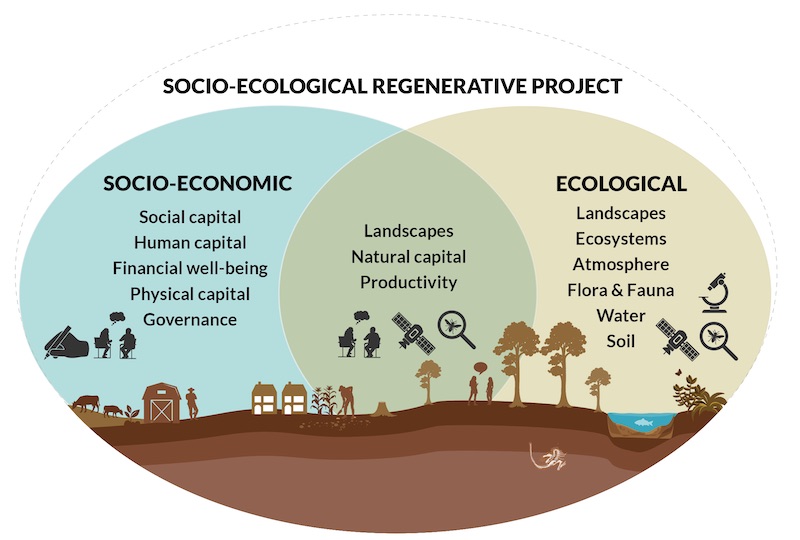The Circular Bioeconomy Alliance (CBA) aims to accelerate the transition to a circular bioeconomy – i.e. a socio-ecological system that is climate neutral, socially inclusive and regenerates biodiversity.
As one key activity, the CBA promotes regenerative projects across the globe through their network of Living Laps for Nature, People and Planet. These Living Labs encompass 16 landscapes and range from agroforestry initiatives in Rwanda, to forest protection and grassland restoration in Romania. The CBA has defined 7 principles to guide the effective design of these regenerative landscapes and associated 46 criteria against which to benchmark success.

Nature-based Insights has partnered with CBA to design a monitoring and evaluation strategy for these Living Lab projects to monitor progress towards achieving these 7 principles. Monitoring is key for project success and transparency, and it ensures adaptive management based on robust evidence.
NbI created a monitoring handbook that assists with designing the monitoring procedure, spatiotemporal considerations, the choice of suitable indicators, and the practical planning and implementation of the monitoring strategy.
To compile the monitoring handbook, the NbI team conducted a literature review of over 200 papers which present environmental, social and economic indicators and measurement procedures capable of monitoring adherence to the 7 principles and 46 criteria. This literature review was synthesised into a comprehensive monitoring document, structured by five key monitoring methods (field surveys, remote sensing, lab methods, participatory methods and audits) and key socio-ecological systems components:

After presenting key considerations around choosing appropriate baselines and spatio-temporal scales, the handbook explores key monitoring indicators for each systems component. This is complemented with a discussion on practicality, spatio-temporal scales and technical expertise required, designed to assist with cost-benefit analysis. For instance, the report presents various field survey methods to monitor biodiversity indicators for a variety of taxonomic groups and the associated trade-off from a cost, labour and accuracy perspective.
While monitoring might seem multi-dimensional and complex, it does not need to be daunting! Many indicators are easy and cheap to measure and are well-established, for example water quality. Additionally, there are many monitoring methods which can yield a multitude of valuable indicators through only one major sampling effort, for instance:
- An on-site vegetation survey can provide multiple indicators such as plant diversity, vegetation structure, carbon sequestration.
- From a social perspective, a repeatable household questionnaire in the project landscape can shed light on indicators related to livelihoods, social cohesion, project satisfaction and economic opportunities.
- A remote sensing derided land use and land cover classification can be used to extract several indicators such as ecosystem regeneration and conversion, habitat complexity and ecosystem connectivity, additionality and leakage. It can easily be re-created yearly to re-assess project development.
Overall, the monitoring handbook seeks to provide scientific guidance for robust monitoring whilst appreciating the multi-dimensionality of socio-economic systems and the need to pragmatism and simple methods. The monitoring handbook will be trialled in the field in the coming year, and iterated and improved together with the Circular Bioeconomy alliance.
31 January 2024




